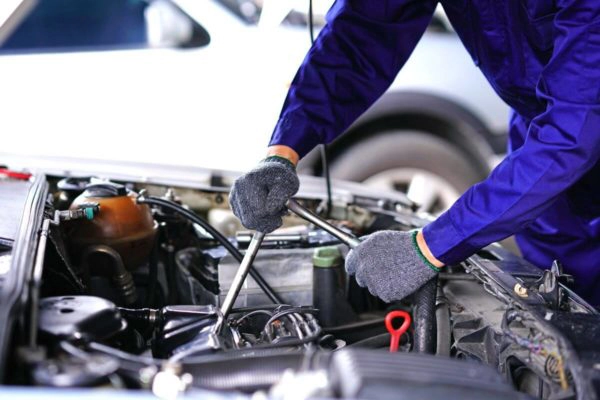The global quest for reliable car spare parts has evolved into a shadowy empire worth over $400 billion annually, where counterfeit components masquerade as genuine articles, supply chains span continents like invisible highways, and ordinary motorists unwittingly become participants in an intricate game of industrial espionage and economic warfare. What appears to be a simple transaction, purchasing a replacement brake pad or alternator, represents the endpoint of a complex network that reaches from factory floors in Guangzhou to distribution centres in Hamburg, revealing fundamental truths about globalisation, quality control, and the vulnerability of modern transportation systems.
The Architecture of Deception
Deep within the car spare parts industry lies a sophisticated counterfeiting operation that would impress intelligence agencies with its scope and audacity. Investigators tracking fake components have uncovered manufacturing facilities capable of producing identical replicas of branded parts, complete with holographic security labels, authentic-looking packaging, and serial numbers that pass initial inspection.
The counterfeit network operates through multiple layers of insulation:
-
Primary manufacturers in regions with limited regulatory oversight
-
Intermediary distributors who legitimise products through paperwork manipulation
-
Wholesale networks that blend genuine and fake components
-
Retail outlets are often unaware of their inventory’s true origins
A former quality control manager at a major automotive manufacturer, speaking on condition of anonymity, revealed the chilling reality: “We estimate that between 15-20% of spare parts in certain markets are counterfeit. The sophisticated ones are virtually indistinguishable from genuine components until they fail catastrophically.”
Singapore: A Case Study in Market Dynamics
Singapore’s car spare parts market provides a fascinating microcosm of global industry dynamics, where strict regulatory frameworks clash with economic pressures and consumer demands. The island nation’s unique position as a transhipment hub has made it both a gateway for legitimate trade and a conduit for questionable merchandise.
Government data reveals the scope of Singapore’s parts trade:
-
Annual imports exceeding S$3.2 billion across all automotive categories
-
Over 2,000 registered importers handling vehicle components
-
Seizure rates of 0.3% for counterfeit automotive products by customs
-
Average markup of 40-60% from wholesale to retail pricing
The Singapore experience demonstrates how even the most regulated markets struggle with authenticity verification. Customs officials, despite sophisticated scanning equipment and international cooperation agreements, acknowledge that determined counterfeiters can exploit system vulnerabilities.
The Supply Chain Labyrinth
Tracing the journey of car spare parts from manufacturer to consumer reveals a labyrinthine network that defies simple categorisation. Genuine components often travel through the same distribution channels as counterfeit ones, creating opportunities for substitution at multiple points.
Critical Vulnerability Points:
-
Manufacturing facilities where security protocols may be compromised
-
Shipping containers provide manipulation opportunities during transit
-
Warehouse facilities where inventory mixing occurs deliberately or accidentally
-
Retail locations where economic pressures override quality concerns
Investigation has uncovered instances where legitimate parts were systematically replaced with counterfeits during distribution, a practice insiders term “the great substitution.”
The Economics of Authenticity
The financial incentives driving the counterfeit car spare parts trade operate on multiple levels, creating a self-reinforcing cycle that proves remarkably resistant to enforcement efforts. Profit margins on fake components can exceed 500%, whilst the risk of prosecution remains relatively low compared to other forms of international crime.
Consumer behaviour inadvertently supports this ecosystem. Research conducted across multiple markets demonstrates that price sensitivity often overrides quality concerns, particularly for seemingly simple components like filters, belts, and basic electrical parts.
“The average motorist cannot distinguish between a genuine oil filter and a sophisticated counterfeit,” explained a forensic automotive engineer who has testified in numerous court cases. “The counterfeit might function adequately for months before failing, by which time the connection between component failure and original purchase has been lost.”
Technology’s Double-Edged Impact
Digital transformation has simultaneously complicated and simplified the car spare parts landscape. E-commerce platforms enable unprecedented access to global suppliers, yet the same technologies facilitate the distribution of counterfeit components on an industrial scale.
Advanced manufacturing techniques, including 3D printing and precision injection moulding, have democratised production capabilities whilst making authentication increasingly challenging. Quality control systems that once required substantial investment can now be replicated by well-funded counterfeiting operations.
Technological Countermeasures Include:
-
Blockchain tracking systems are creating immutable supply chain records
-
DNA marking technologies embedded within component materials
-
Smartphone apps enabling consumers to verify authenticity through QR codes
-
Artificial intelligence algorithms detecting anomalies in pricing and distribution patterns
Regulatory Responses and Industry Initiatives
Governments worldwide have recognised car spare parts counterfeiting as a significant threat to public safety. The European Union’s recent directive requiring digital certificates represents the most comprehensive regulatory response to date.
Industry initiatives include:
-
Global databases tracking counterfeit incidents and seizures
-
Training programmes for customs officials and retail staff
-
Consumer education campaigns highlighting authentication techniques
-
Legal action coordination targeting major counterfeiting networks
The Human Cost
Behind the statistics lies a sobering reality. Counterfeit car spare parts contribute to thousands of accidents annually, though precise attribution remains challenging due to complex accident causation analysis.
Emergency room physicians report treating injuries consistent with sudden brake failure, steering malfunctions, and electrical fires, all potentially linked to substandard replacement parts. The true scale may never be quantified, as many incidents are attributed to general mechanical failure rather than component authenticity issues.
Navigating the Market
For consumers attempting to navigate this complex landscape, several strategies can reduce exposure to counterfeit components. Purchasing from authorised dealers provides the strongest authenticity guarantee, whilst independent verification through manufacturer databases can confirm component legitimacy.
Understanding this sophisticated global network empowers consumers to make informed decisions when sourcing essential car spare parts.

